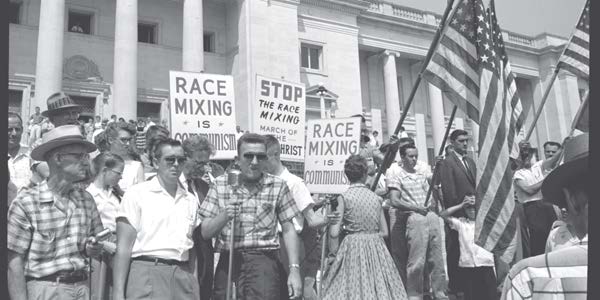Raoul Peck’s rousing, provocative documentary, I Am Not Your Negro, opening February 3 in San Francisco, is a tone poem and a clarion call. This urgent, cogent film about James Baldwin is based on his unfinished work, Remember This House. Peck uses interviews, archival footage, film and television clips, as well as striking photographs to reflect on the way African Americans are oppressed in America. Baldwin considers school integration, the teachers and “heroes” he had in his youth, playwright Lorraine Hansberry, and the lives and murders of Medgar Evers, Martin Luther King, Jr., and Malcolm X to show how they impacted his own intellectual development and activism.
Scenes of Baldwin on The Dick Cavett Show or lecturing at Cambridge feature his eloquent and blistering remarks about inequality and white privilege. There is also a section in the film addressing Baldwin being identified as a “dangerous individual” in the eyes of the FBI, both for his writings and for being a homosexual.
Peck makes the expected connection to the Black Lives Matter movement in I Am Not Your Negro, showing images from Ferguson, Missouri, and of Trayvon Martin, and yet these illustrations only magnify the importance of Baldwin’s powerful, forceful words written decades ago.
The filmmaker spoke with me for the San Francisco Bay Times about James Baldwin and I Am Not Your Negro.

Gary M. Kramer: What do you remember about first reading James Baldwin?
Raoul Peck: Someone gave me The Fire Next Time as an introduction to Baldwin. It blew my mind. It helped me understand what was going on. He wrote it in a contextual way to see the issues and problems in your country, and who you are as a black person. I never left Baldwin. I went back again and again and read everything of his I could put my hands on.
Gary M. Kramer: How did you find and assemble all of the speeches, writings, film clips, photographs and news footage? The film is remarkably well edited.
Raoul Peck: As you can imagine, it’s a long process, and it was possible only because I had the time to search and experiment. Having access to the rights — if I didn’t have access to all of James Baldwin’s body of work, I couldn’t have made the film — I developed a relationship with the estate to keep those rights for ten years. I needed to have the time to search the archive and find the right clip, and find the way to use it that not only makes sense, but also creates sense beyond the archive alone … . Once you know James Baldwin wrote about Doris Day, you have to use that. It’s wonderful to take a clip from a Day film, but which one? You can start setting aside clips, but you don’t know where they will go, or how much of it to use. You do that for Gary Cooper, John Wayne, etc. That’s a real accumulation of footage. That’s why it’s a process you cannot shorten.
Gary M. Kramer: The film has political and pop culture content that reflects Baldwin’s intellectual and activist development. Can you talk about the impact of these images and how photos are powerful and persuasive in terms of representation?
Raoul Peck: It’s almost a lesson on film or image analysis. He teaches you how to look at an image: it’s not the lighting, it’s the ideology, the narrative. No image is innocent. He’s giving you the instrument of your own analysis to deconstruct the image—and you can apply it to any image. When he talks about Guess Who’s Coming to Dinner, he tells you about the story and what Hollywood is asking of Sidney Poitier, and how this role is a double-edge role. It’s putting the bar high for the rest of the black population. It’s intriguing and exciting and when you see the film again, you don’t have the innocence. I hope (my) film does this as well.
Gary M. Kramer: The film only briefly mentions Baldwin’s sexuality. Was that deliberate?
Raoul Peck: Baldwin was discrete enough about his sexuality. I didn’t hide it. When he talks about being in Puerto Rico with Lucien [Happsberger], it was his lover. I respected his words. When he wanted to talk about it, he wrote Giovanni’s Room. It was bold. I don’t know any white writer who would write about a mixed gay couple, and he did this before any gay movement. He is someone who would have put [his sexuality] in the bigger political and historical context. He would talk about it in private. I read a lot about this, but that’s another topic.
Gary M. Kramer: How did making I Am Not Your Negro re-inspire you about Baldwin?
Raoul Peck: Because of my learning of him early on in my life, and using him in many of my projects as inspiration, the process was not self-discovery. Whatever I needed from Baldwin I already got. It was how to bring to others what Baldwin brought to me.
© 2017 Gary M. Kramer
Gary M. Kramer is the author of “Independent Queer Cinema: Reviews and Interviews,” and the co-editor of “Directory of World Cinema: Argentina.” Follow him on Twitter @garymkramer
Recent Comments